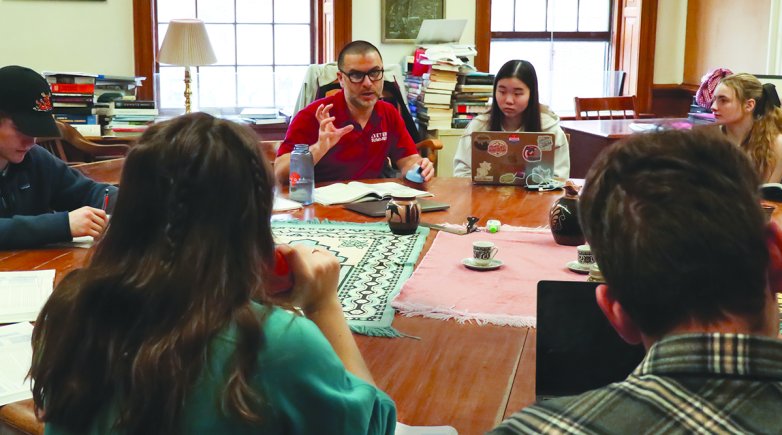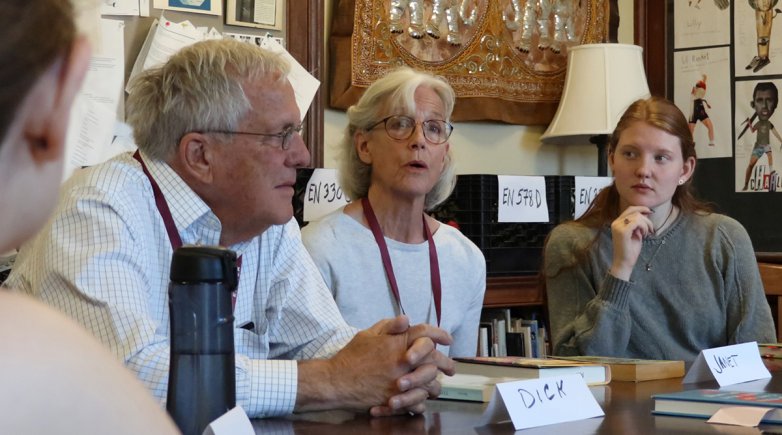Early Investments
Students gain insight into macroeconomic theory.
Even before the class period has officially begun, the conversation around the Harkness table in ECO510: Macroeconomic Issues in the United States is well underway. A handful of students talk through the finer points of the previous night’s reading as their classmates trickle through the arched doorway of Academy Building room 029.
Sensing a potential starting point for the day’s discussion, History Instructor Aykut Kilinc interjects with precision, opening the topic to the now full table without disrupting momentum of the exchange. “For those that have just arrived, we are trying to remember the notion that expansionary fiscal policy increases interest rates, right?” Kilinc summarizes, while simultaneously teeing up an entry point for any takers.
Charles Holtz ’23 picks up the cue. “If expansionary fiscal policy drives up interest rates, then ‘crowding out’ occurs,” he says of the idea that government spending, funded by an increase in taxes, causes a decrease in private sector spending.
This senior-level course, one of three economics offerings at the Academy, explores macroeconomic theory on a national scale, examining the intertwined entities of the U.S. economy and its government. It seeks to help students answer questions like, “How does a nation’s economy grow?” and “Who sees the benefits of that growth?”
Students dig into the factors that led to economic crises throughout history, including the 2008 recession and the financial repercussions of the COVID-19 pandemic, and how these events affect people across different racial, gender, generational and other segments of society. As the period progresses, the history and theories the students are discussing get increasingly current. Topics seemingly ripped from the headlines —rising inflation, the national unemployment rate, and the Federal Reserve’s decision to raise interest rates — fire up the conversation.
“How do banks determine their interest rate?” Kilinc asks. The material is dense and answers require a group effort. Students thumb through text pages and scroll Google search results. “It’s based on consumer behavior, GDP and the Federal Reserve,” Holtz and Daisy Newbury ’23 respond together.
Kilinc plays a short video that begins with a still frame of a numbers o staggering Newbury reads it aloud, twice: “21 trillion, 784 billion, 284 million, 284 thousand, 284 dollars.”
“This is the national debt,” the video’s voiceover says, going on to explain that because the government’s interest rate is relatively low, it can afford to continue to spend despite the increasing deficit — a tenet of Modern Monetary Theory.
Ale Murat ’23 points out a conflicting view from the reading. “The book says countries should only run a deficit on their national debt when there’s a recession or when there’s war or when there’s troubled times. But when it’s peacetimes where the countries are near full employment, then it shouldn’t create a deficit in this national debt,” she says. “Isn’t that what’s happening here? They don’t care how large the national debt gets, and they’re just playing on the fact that interest rates are low?”
“It’s almost like walking on a tightrope,” Kilinc acknowledges.
And with that, the period comes to an end, but the conversation continues as students step out of the classroom and into the Academy Building halls.
Editor's note: This article first appeared in the spring 2023 issue of The Exeter Bulletin.



